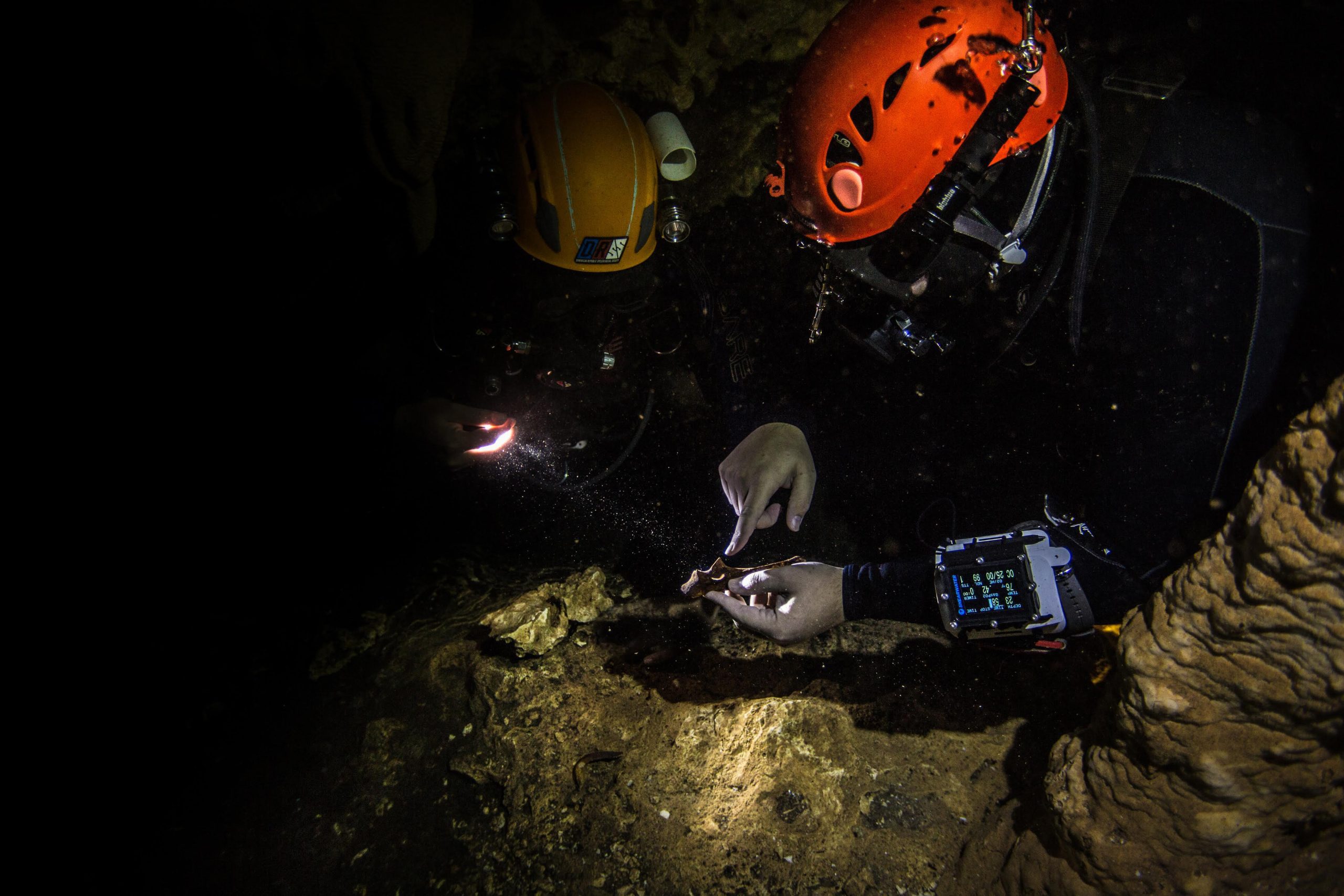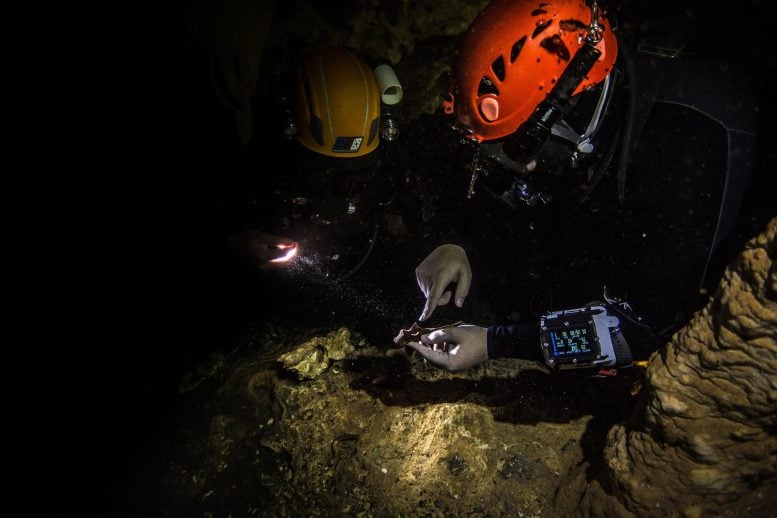

Researchers have discovered new fossils of the extinct Caribbean monkey Antillothrix bernensis in the Dominican Republic. The findings shed light on the monkey’s anatomy, diet, and social behavior. Researchers believe the species went extinct around 10,000 years ago and may have been preyed upon by large owls. These fossils offer valuable insights into past biodiversity and conservation efforts.
By studying rare fossils of jaws and other skull parts of a long-extinct Caribbean monkey, a team of researchers that includes a Johns Hopkins University School of Medicine professor says it has uncovered new evidence documenting the anatomy and ecology of an extinct primate once found on Hispaniola — the Caribbean island on which Haiti and the Dominican Republic are located.
The fossils were found in flooded caves in the Dominican Republic. The cache, including seven skulls, five mandibles (jawbones), and dozens of other skeleton parts, makes the fossil site, Cueva Macho, the richest one yet for primate fossils on Hispaniola, the researchers say.
The research was recently published in the Journal of Human Evolution.
Insights into Antillothrix bernensis Extinction
Evidence indicates that the monkey, Antillothrix bernensis, became extinct sometime during the last 10,000 years, says senior author Siobhán Cooke, Ph.D., associate professor of functional anatomy and evolution at the Johns Hopkins University School of Medicine.
“These fossils help us to better understand the anatomy of Antillothrix, which can help us identify ecological factors that might have predisposed it to extinction,” Cooke says. “These data can ultimately guide policy for preserving the remaining mammalian diversity on the Caribbean islands and elsewhere.”
Cooke was part of the team that identified the first skull of a juvenile Hispaniolan monkey from a flooded cave in the Dominican Republic in 2009. Since then, divers from the Dominican Republic Speleological Society, in collaboration with Juan Almonte-Milán, curator at the Museo Nacional de Historia Natural “Prof. Eugenio de Jesús Marcano,” continued to search for similar wet caves nearby, leading to the discovery of the most recent set of fossils in 2018.
The rarity of South American and Caribbean Primate Fossils
The opportunity to study this many fossils of South American and Caribbean monkeys is rare, Cooke says. Only one other species of extinct South American monkey, Homunculus patagonicus (a long-extinct animal that lived in Patagonia), is known for a comparably large sample of fossils.
“The number and quality of the Antillothrix crania outlined in this paper allow us to describe the skull completely and understand the variation between individuals,” Cooke says. “This can tell us about the diet and social systems of these animals.”
Using virtual three-dimensional models the researchers made of the fossils, which are housed in the National Museum of Natural History in Santo Domingo, Dominican Republic, scientists concluded that male and female Hispaniola monkeys were monomorphic (they were about the same size as one another) and weighed up to five pounds.
“This indicates that there was little competition for mates among males,” says Cooke. “They may have lived in small family groups consisting of a female, male, and dependent offspring.”
Looking at the fossils’ rounded teeth and relatively small canines, researchers also say the extinct monkeys’ diet consisted mainly of fruit.
Antillothrix may have a modern relative. At just over two pounds, the South American Titi monkey, with its short canine teeth, offers the closest glimpse at what the Hispaniola monkey may have looked like in the wild.
Theories About the Monkeys’ Fate
But how did seven or eight Hispaniola monkeys end up at the bottom of a cave approximately 10,000 years ago?
Cooke says it could be a matter of bad luck — though it seems unlikely that up to eight tree-dwelling primates would fall into a cave.
Evidence of injuries in the monkeys’ jaw fossils provided the researchers with another potential answer: an owl predator.
One Antillothrix skull includes only the front teeth, but not the ramus, or the back portion of the jaw. Other skulls are missing small pieces or large chunks of their jaws.
“When owls feed, they will sometimes preferentially consume the masseter, a major muscle attached to the jaw, and these injuries are consistent with that,” Cooke says. “It could be possible that a now extinct owl, which would have been quite large, caught these monkeys and brought them into the cave where it was living—rather than the monkeys falling in at random. Owl-feeding deposits are not uncommon in Hispaniolan caves.”
The researchers next intend to take a closer look at other Antillothrix bones, including limb bones, ribs, and vertebrae.
“Learning more about these animals provides a window into the past and helps us better appreciate the current and past biological diversity of the Dominican Republic and Haiti,” Cooke says.
She notes that these countries once had not only monkeys and giant owls but also giant sloths, large rodents, and several species of insect-eating shrews, crocodiles, and tortoises.
Reference: “Craniomandibular variation in the endemic Hispaniolan primate, Antillothrix bernensis” by Lauren B. Halenar-Price, Zachary S. Klukkert, Juan N. Almonte-Milán, Phillip Lehman, Zana R. Sims and Siobhán B. Cooke, 30 September 2024, Journal of Human Evolution.
DOI: 10.1016/j.jhevol.2024.103589
In addition to Cooke and Milán, other researchers involved in the study are first author Lauren Halenar-Price of Farmingdale State College, Zachary Klukkert of Oklahoma State University, Phillip Lehman of the Dominican Republic Speleological Society and Zana Sims, a postdoctoral fellow at the University of Southern California who conducted work on this study as a Johns Hopkins doctoral student.